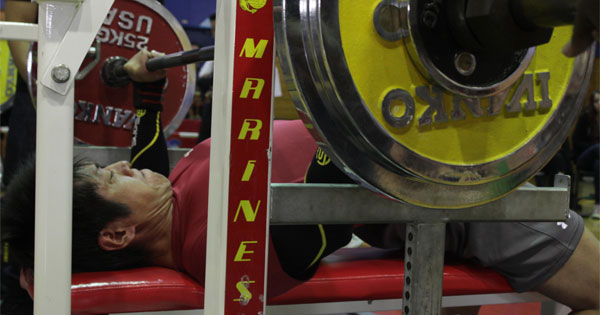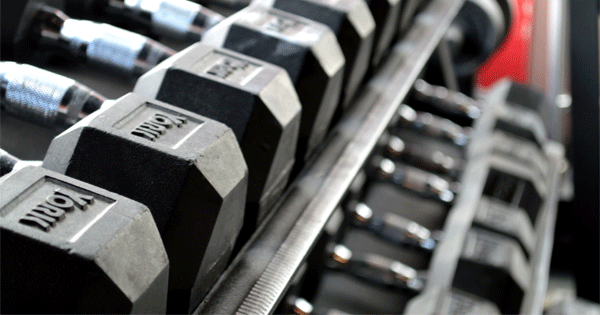You don’t need to speak German to master German Volume Training. Master your threshold for pain and they this insane and effective method of shocking your muscles. If you’re in a rut, seeing no muscle gains, and need a dramatic change, look no further. Consider your muscle building slump to be over.
Core Principles of German Volume Training

German Volume Training isn’t rocket science. There’s no elaborate formulas to figure out, and no training techniques to be mastered. GVT is built around three simple, core principles:
- One Exercise. You perform one exercise per body part. That’s it. Stick with heavier, compound-style lifts that tax major muscle groups. Because you will be performing a limited number of exercises per week, proper exercise selection is critical in maximizing the effects of GVT.
- 100 Reps. For each exercise, you will be performing 10 sets of 10 reps. Start with 50 to 60% of your one rep max for that lift. Perform as many reps as possible for each of the 10 sets. There is no need to train to failure. Train close to failure. GVT is taxing enough without training to failure. When you can perform 100 total reps, or 10 sets of 10 reps, add 5 pounds to the bar the next time you use the same movement.
- Rest Pause. You will be resting approximately 60-90 second between sets. There are numerous forms of GVT floating around the Internet, some a variation of Vince Gironda’s 8×8 training, and some with incredibly short rest periods. Resist the urge to lower your rest periods under the 60 second mark. Limiting rest like this will force you to decrease the load. You’re already working with weights slightly above half of your 1RM. It does you no good to use lighter weights then this. For most exercises, a 60 second rest works best. For big, beefy and taxing exercises like the squat, 90 seconds is needed. (And then some!)
German Volume Training Notes
You will also find that on certain exercises, you will lose strength fairly quickly. My strength dives when trying to hammer out sets of overhead presses. I don’t think I’d be able to perform 10 sets of 10 reps with 20% of my 1RM for this exercise.
Hang in there. Over time, your strength endurance will noticeably increase. Push for one more rep on every set. As long as you focus on progression, the weight will take care of itself.
On the first few sets of an exercise, the weight will feel too light. You’ll start to wonder if you’ve made a mistake. You didn’t. Be patient. By sets 7, 8, 9 and 10, you’ll be in tremendous pain. GVT is very deceiving. On paper it looks too easy. After 2 sets, it feels too easy. After a week of GVT, you’ll be ready to quit the program, and never run it again. It’s tough! But it works!
The German Volume Training Routine

German Volume Training involves only three workouts per week. Resist the urge to break this routine up into a four or five day split before actually trying it. It’s best to try GVT for several weeks before tweaking with it. My first GVT squat day left me so sore that I had a hard time squatting 8 days later, so I recommend not changing the program at all.
The three workouts are push, pulls and legs. I’ve modified this workout from the original structure. The original GVT program advocated working arms and shoulders together, and then hitting back and chest three days later. The problem with this approach is that your arms get so blasted tired and sore that it is very difficult to properly workout your chest and back.
The structure of the workouts is as follows:
- Day 1: Chest, Shoulders, Triceps (PUSH)
- Day 2: Rest
- Day 3: Back, Biceps, Abs (PULL)
- Day 4: Rest
- Day 5: Quads, Hamstrings, Calves (LEGS)
- Day 6: Rest
- Day 7: Rest
For abs and calves, there is no need to destroy yourself with a 10×10 set/rep scheme. Perform 3 sets of 10-25 reps for these body parts.
After working your chest and shoulders, your triceps may already be fried. Use your best judgment when working triceps. I recommend using 3 sets of 6-12 reps instead of the 10×10 method. But if you have it in the tank, by all means hammer out 10 sets on triceps.
The original German Volume Training method advocated only 3 sets for both biceps and triceps, and involved no direct hamstring work. You can stick with 3 sets for biceps, or jump up to 10×10. I prefer to go 10×10.
Do whatever is most effective for your body. For hamstrings, I recommend a 10×10 approach. Since you won’t be able to walk anyway from the squats, you might as well sell out completely to the pain.
German Volume Training Exercise Selection

Don’t get fancy with GVT. Stick with basic exercises, and avoid isolation work. A GVT program generally runs between 4-6 weeks. Pick exercises and stick with them. There is no need to worry about muscle confusion or isolation on GVT.
- Chest. Bench press, weighted chest dip, decline dumbbell press, etc.
- Shoulders. Pick some form of standing or seated overhead press, such as military press or seated dumbbell press.
- Triceps. Skullcrushers, seated French press, close grip bench press, etc.
- Back. Barbell rows or Yates rows, T-Bar rows, low pulley rows, pull ups, etc.
- Biceps. Barbell curls, preacher curls, etc.
- Abs. Sit ups, leg-lifts, etc.
- Quads. Squats, front squats, leg press, etc.
- Hamstrings. Romanian deadlifts, leg curls, sumo deadlifts, etc.
- Calves. Standing or seated calf raises, etc.
Time to Hit the Gym
It’s time to hit the gym. Expect extreme muscle soreness on this program. I recommend sticking with GVT no longer then 4-6 weeks. After that point, take a break. Your body will need it. Perform a more standard hypertrophy routine at this time.
Push yourself on every set. Try for one more rep. GVT is known for its ability to add up to 10 pounds of muscle over a 4-6 week cycle. Eat big, and rest big!
Visit Muscle&Strength for the original article













